Chapter 15: Early Renaissance in Italy: Fifteenth Century
0.0(0)
0.0(0)
Card Sorting
1/20
Study Analytics
Name | Mastery | Learn | Test | Matching | Spaced |
|---|
No study sessions yet.
21 Terms
1
New cards
Humanism
an intellectual movement in the Renaissance that emphasized the secular alongside the religious.
2
New cards
Quattrocento
the 1400s, or fifteenth century, in Italian art
3
New cards
Mullion
a central post or column that is a support element in a window or a door
4
New cards
Orthogonal
lines that appear to recede toward a vanishing point in a painting with linear perspective
5
New cards
Pietra serena
a dark-gray stone used for columns, arches, and trim details in Renaissance buildings
6
New cards
Trompe l’oeil
(French, meaning “fools the eye”) a form of painting that attempts to represent an object as existing in three dimensions, and therefore resembles the real thing.
7
New cards
Bottega
the studio of an Italian artist
8
New cards
Perspective
depth and recession in a painting or a relief sculpture.
9
New cards
linear perspective
Objects shown in \______ achieve a three-dimensionality in the two-dimensional world of the picture plane.
10
New cards
orthogonals
Lines that draw the viewer back in space to a common point, called the vanishing point.
11
New cards
vanishing point
Paintings, however, may have more than one \____, with the orthogonals leading the eye to several parts of the work.
12
New cards
aerial perspective
Landscapes that give the illusion of distance are in an atmospheric or \_____.
13
New cards
Madonna
the Virgin Mary, mother of Jesus Christ
14
New cards
Pearls
used as symbols in scenes of the Incarnation of Christ.
15
New cards
Neoplatonism
a school of ancient Greek philosophy that was revived by Italian humanists of the Renaissance
16
New cards
Mercury
is the patron of the arts and merchants, and therefore an appropriate symbol for the Medici.
17
New cards
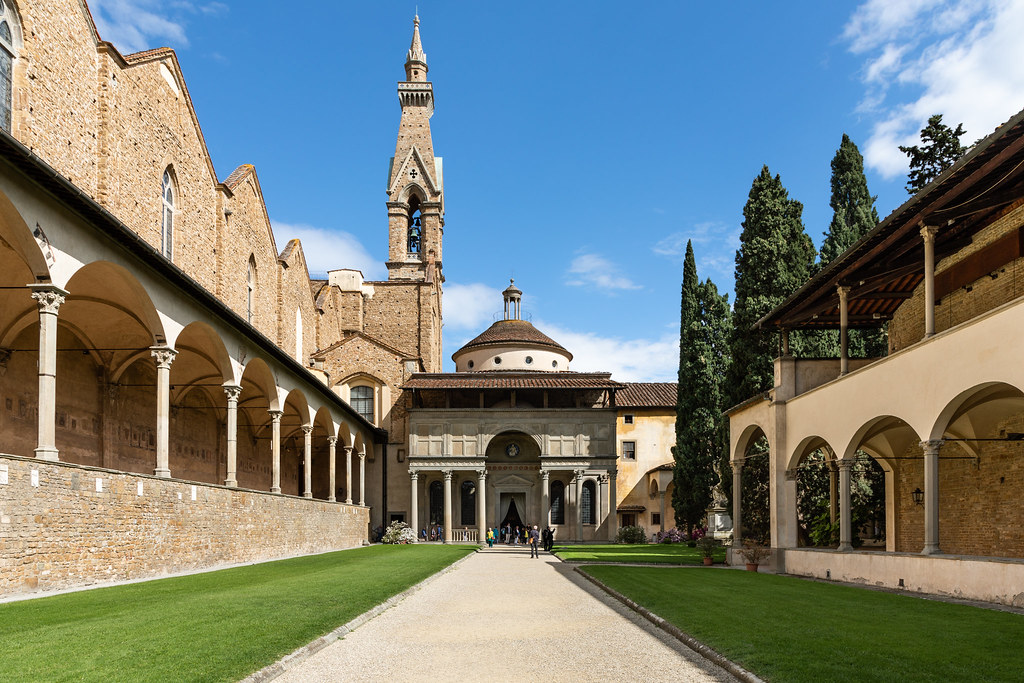
Pazzi Chapel
* Designed by Filippo Brunelleschi
* Chapter house: a meeting place for Franciscan monks; bench that wraps around the interior provides seating for meetings.
* Rectangular chapel with an apse and an altar attached to the church of Santa Croce, Florence.
* Chapter house: a meeting place for Franciscan monks; bench that wraps around the interior provides seating for meetings.
* Rectangular chapel with an apse and an altar attached to the church of Santa Croce, Florence.

18
New cards
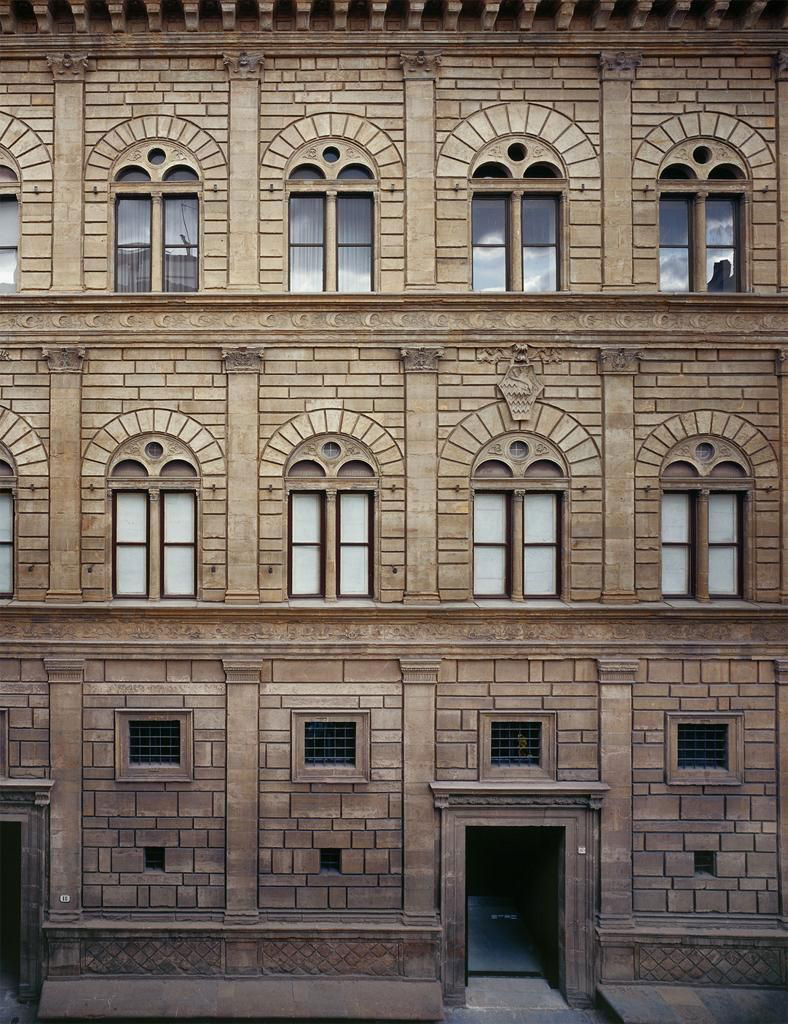
Palazzo Rucellai
* Designed by Leon Battista Alberti (c. 1450)
* The building format expresses classical humanist ideals for a residence
* The articulation of the three stories links the building to the Colosseum levels, which have arches framed by columns
* The building format expresses classical humanist ideals for a residence
* The articulation of the three stories links the building to the Colosseum levels, which have arches framed by columns
19
New cards
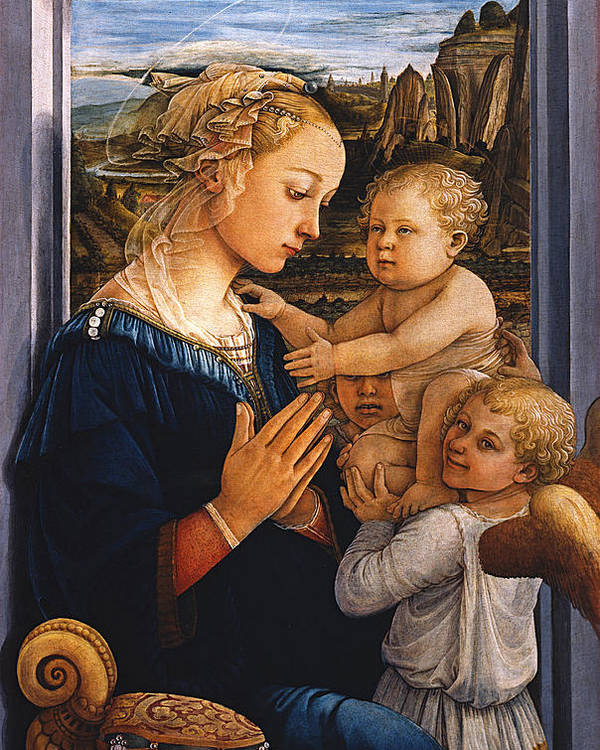
Madonna and Child with Two Angels
* Painted by Fra Filippo Lippi (c. 1465)
* Pearl motif; symbolic landscape
* Scene depicted as if in a window in a Florentine home.
* Humanization of a sacred theme; there is a sense of domestic intimacy.
* Pearl motif; symbolic landscape
* Scene depicted as if in a window in a Florentine home.
* Humanization of a sacred theme; there is a sense of domestic intimacy.
20
New cards
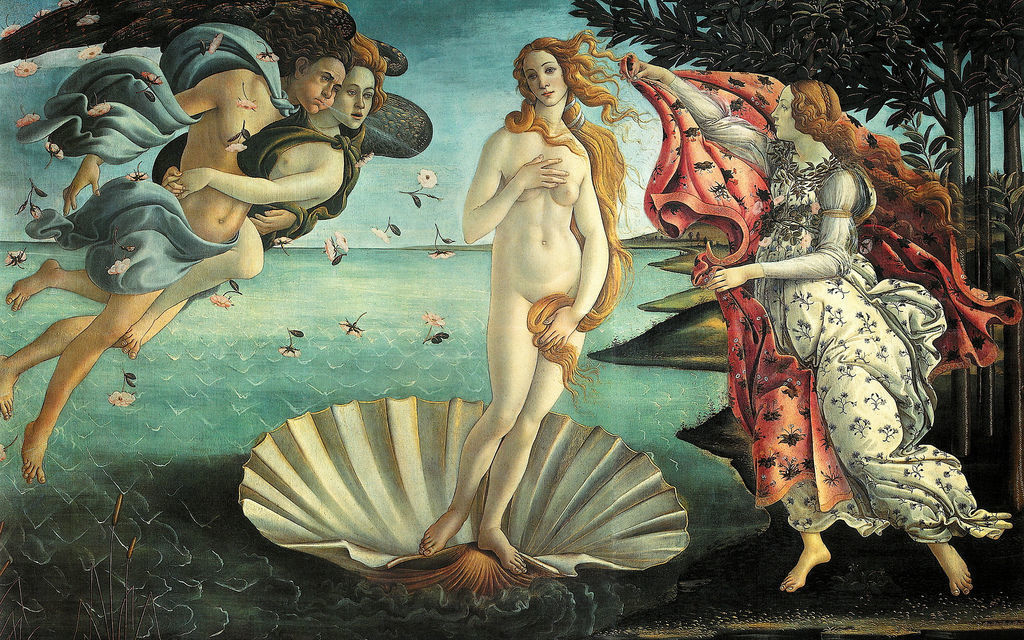
Birth of Venus
* Painted by Sandro Botticelli (c. 1484–1486)
* Medici commission; may have been commissioned for a wedding celebration.
* Painting based on a popular court poem by the writer Poliziano
* A revival of interest in Greek and Roman themes
* Medici commission; may have been commissioned for a wedding celebration.
* Painting based on a popular court poem by the writer Poliziano
* A revival of interest in Greek and Roman themes
21
New cards
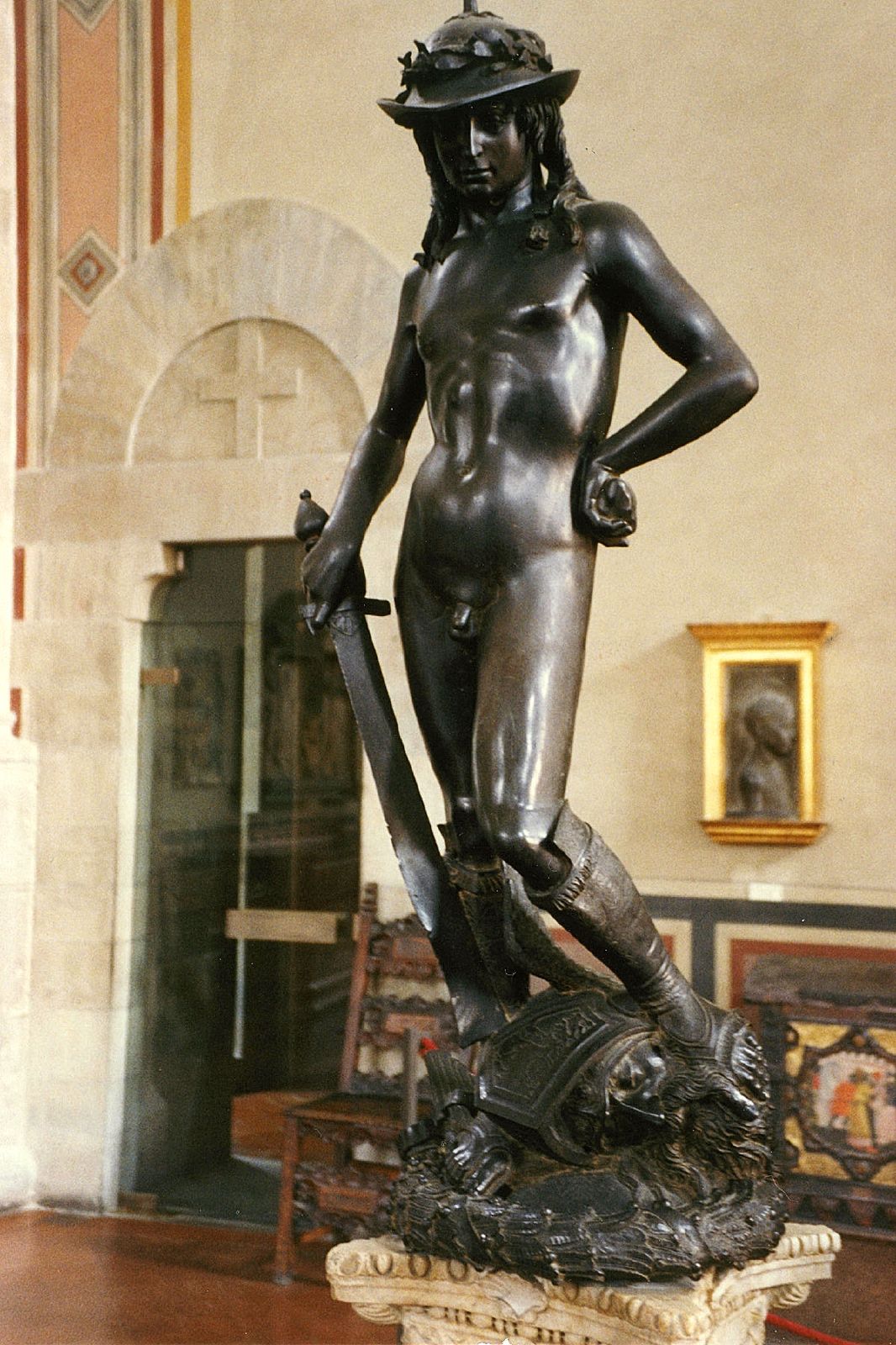
David
* Sculpted by Donatello (c. 1440–1460)
* Made of bronze
* Life-size work, probably meant to be housed in the Medici palace courtyard
* The work depicts the moment where Goliath was defeated with a rock from a slingshot
* Made of bronze
* Life-size work, probably meant to be housed in the Medici palace courtyard
* The work depicts the moment where Goliath was defeated with a rock from a slingshot